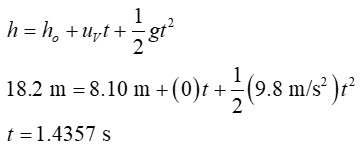A student is late for a test! She takes her motorcycle to get to school, but sees that a bridge on the way is washed out. She decides to try leaping it with her motorcycle. The side the motorcycle is on is 18.2 m above the river, whereas the opposite side is a mere 8.10 m above the river. The river itself is a raging torrent 26.0 m wide. How fast must she be going to make it safely across? Use projectile motion, and assume the initial speed is purely horizontal.
Displacement, Velocity and Acceleration
In classical mechanics, kinematics deals with the motion of a particle. It deals only with the position, velocity, acceleration, and displacement of a particle. It has no concern about the source of motion.
Linear Displacement
The term "displacement" refers to when something shifts away from its original "location," and "linear" refers to a straight line. As a result, “Linear Displacement” can be described as the movement of an object in a straight line along a single axis, for example, from side to side or up and down. Non-contact sensors such as LVDTs and other linear location sensors can calculate linear displacement. Non-contact sensors such as LVDTs and other linear location sensors can calculate linear displacement. Linear displacement is usually measured in millimeters or inches and may be positive or negative.

Since the initial speed is completely horizontal, the initial vertical velocity will be zero.
Apply the second kinematic equation in the vertical direction to determine the time taken by the student to cross the river.

Step by step
Solved in 2 steps with 2 images









